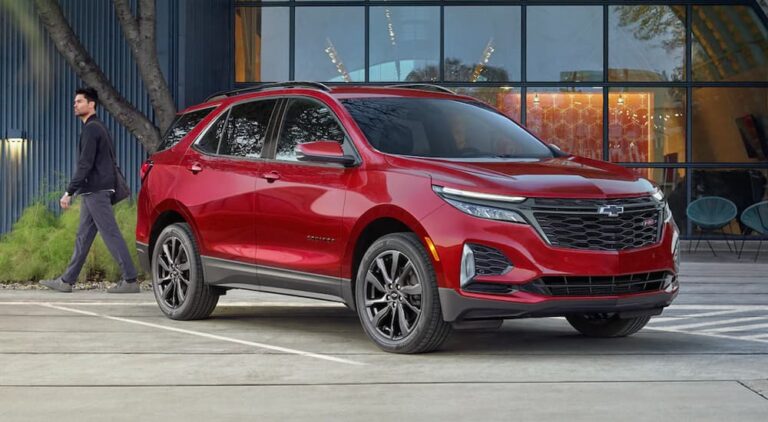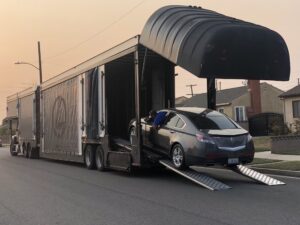The Chevy Equinox has become one of Chevrolet’s most popular crossover SUVs over the years, thanks to its affordable pricing, practical size, and family-friendly design. With its combination of versatility, fuel efficiency, and available features, it has earned a solid place in the competitive compact SUV market.
However, like many vehicles with a long production history, not every model year has been perfect. Some production years have had more issues than others, and if you’re considering a used Equinox, it’s wise to know which years might be best to avoid.
In this guide, we’ll walk you through the Chevy Equinox years to avoid, explain the common problems associated with them, and help you make a smart, informed decision if you’re shopping for one.
Why Are Some Chevy Equinox Years Considered Problematic?
Before we dive into the specific years, it’s important to understand why certain Chevy Equinox years to avoid have earned that reputation. Like any vehicle, the Equinox has had production cycles with reliability issues, mechanical flaws, or complaints from owners about recurring problems.
These could include:
- Engine troubles
- Transmission failures
- Electrical problems
- Poor safety ratings for specific years
- Excessive oil consumption
- Expensive repair histories
Identifying these problem years helps buyers avoid potential headaches down the road, ensuring you get a model year that’s more dependable and cost-effective to own.
Chevy Equinox Years to Avoid
Here’s a detailed breakdown of the Chevy Equinox years to avoid, based on recurring issues reported by drivers and known manufacturer flaws during certain production runs.
1. Early First-Generation Models (2005–2007)
The Equinox debuted in 2005, and while it offered an appealing design for its time, the early years of the first generation were plagued with problems. These included:
- Excessive head gasket failures
- HVAC system malfunctions
- Transmission problems
- Electrical glitches
These issues were frequent enough to make these early models less reliable and more costly to maintain over time. If you’re considering a first-generation Equinox, it’s often best to avoid 2005, 2006, and 2007.
2. 2010 Chevy Equinox
When Chevy launched the second generation in 2010, the redesign brought modern features and a more upscale feel. Unfortunately, this year also introduced some of the most notorious problems in the Equinox lineup:
- Excessive oil consumption
Many owners reported needing to add oil between oil changes far too frequently, sometimes resulting in engine damage if unnoticed. - Timing chain issues
Premature wear on timing chains led to costly repairs and, in some cases, complete engine failure. - Air conditioning failure
Multiple complaints surfaced about the A/C system breaking down after only a few years of use.
Due to these widespread and expensive problems, the 2010 Chevy Equinox is one of the most recommended years to avoid.
3. 2011–2013 Chevy Equinox
Unfortunately, the oil consumption and engine issues from 2010 carried over into the 2011, 2012, and 2013 models. During these years:
- Oil consumption problems persisted
- Engine stalling and poor idle performance were reported
- Interior accessories and electronics saw frequent complaints
- HVAC system issues continued
Though some improvements were made, these years still saw enough reliability concerns to land them on the Chevy Equinox years to avoid list.
4. 2015 Chevy Equinox
By 2015, Chevrolet had addressed some of the earlier engine problems, but this year introduced a different set of concerns:
- Transmission shuddering and slipping
- Excessive carbon build-up in direct-injection engines
- Issues with infotainment and electrical systems
While better than the problematic early 2010s models, the 2015 Equinox is often skipped by cautious used car buyers due to these lingering issues.
What Makes Other Equinox Years More Reliable?
Now that we’ve covered the Chevy Equinox years to avoid, it’s worth mentioning what made other years more reliable.
Starting from 2016 onward, many of the earlier engine and transmission issues were addressed. Later models benefited from:
- Improved engine reliability
- Better fuel efficiency
- Upgraded safety features
- Enhanced technology options
- Higher overall customer satisfaction ratings
Though no vehicle is completely problem-free, these improvements made newer Equinox models a much safer and more dependable option for used SUV shoppers.
Tips for Buying a Used Chevy Equinox
If you’re in the market for a used Equinox, here are a few tips to make a smart purchase:
1. Check Maintenance Records
Always ask for complete service records. Regular maintenance can reduce the chance of hidden issues.
2. Get a Professional Inspection
Before buying, have a trusted mechanic inspect the vehicle for signs of oil leaks, transmission problems, or engine performance issues.
3. Avoid High-Mileage Models from Problematic Years
Even if the price seems good, high-mileage Equinox models from the listed years can become expensive quickly with costly repairs.
4. Test the Air Conditioning and Electronics
Known trouble spots like the HVAC and infotainment systems should be thoroughly tested during a test drive.
5. Compare Trim Levels
Some trim levels may include upgraded components and newer systems less prone to problems.
Final Thoughts
The Chevy Equinox continues to be a solid choice for families and commuters seeking a comfortable, practical SUV. However, like any long-running model, it has had its share of problematic years.
To recap, here are the main Chevy Equinox years to avoid:
- 2005–2007
- 2010
- 2011–2013
- 2015
If you’re shopping for a used Equinox, steering clear of these years can help you avoid some of the most commonly reported and expensive problems. Focus on well-maintained later models, particularly from 2016 and newer, for a more reliable and enjoyable ownership experience.
By knowing the history and being aware of potential trouble spots, you can confidently choose an Equinox that serves you well for years to come.











